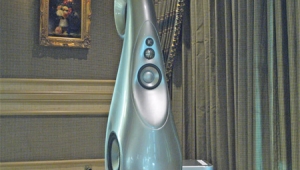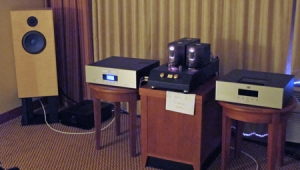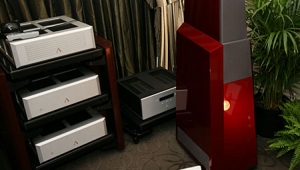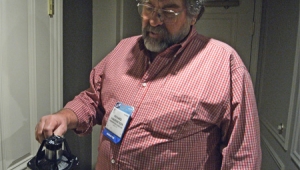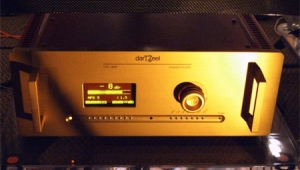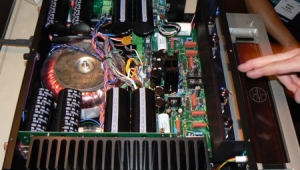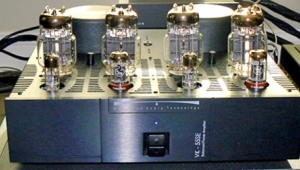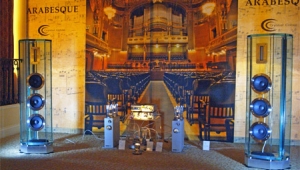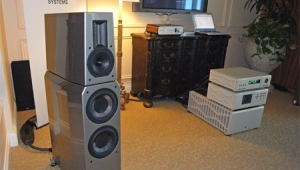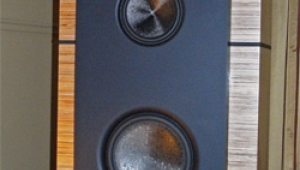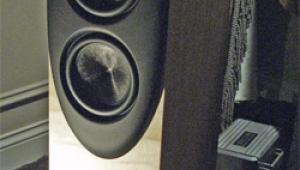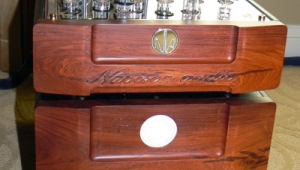| Columns Retired Columns & Blogs |
Harbeth Updates a Classic

Nothing lasts forever, however, and at T.H.E. Show, Harbeth was showing off a major redesign of the speaker, the HL-P3R, which will be in production the second quarter of the year. The SEAS tweeter is unchanged, but the woofer had to be changed, due to SEAS discontinuing the original's driver. The new woofer uses Harbeth's proprietary "Radial" polymer cone material first seen in the M40i. Using a new woofer led to a crossover revision, while the cabinet now has a bolted-in rear panel. Unlike the original, biwirable HL-P3, the "R" has a single pair of terminals.
Harbeth owner Alan Shaw, shown here holding his new baby, told me that a design goal was to match the low-frequency response and tuning of the earlier speaker, which was always a little more extended than the LS3/5a. The last version of the HL-P3 cost $1950–$2459/pair, depending on finish; the HL-P3R will have a "marginal" price increase, said Shaw.
Note, by the way, the little doohickey on the wall to Alan's left. That's one of the Synergistic ART devices. Alan remained agnostic about the effect when I commented on his using them—"They came with the Synergistic cables we borrowed for the Show"—but I took part in an A/B tests in another room at CES where darned if I didn't hear an improvement when the tiny Synergistic devices were brought into the room and a degradation when they were removed.
Yikes!
- Log in or register to post comments


